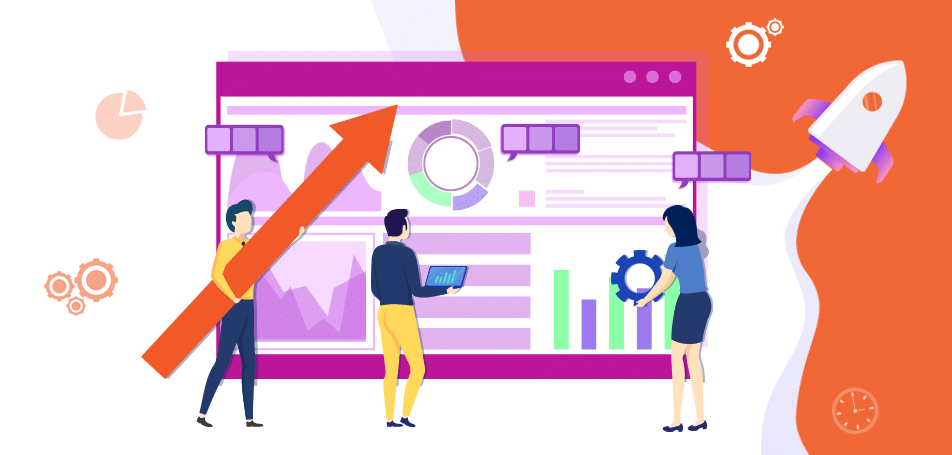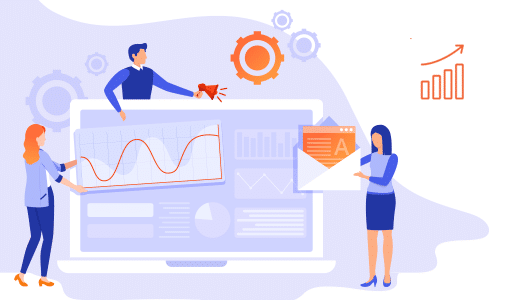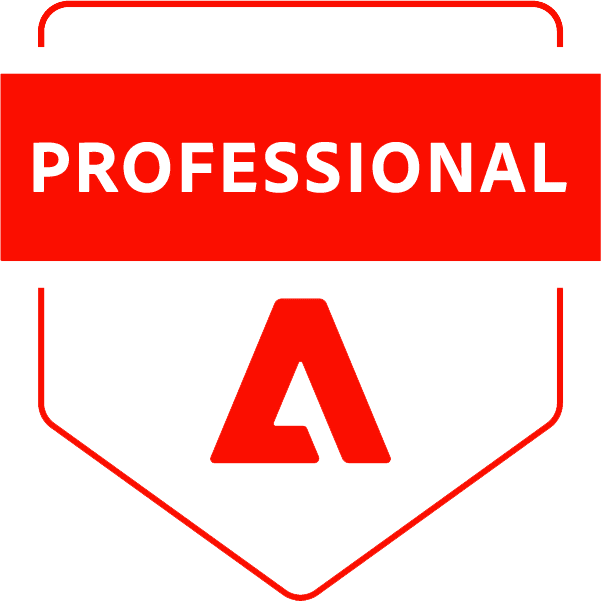
In the bustling world of eCommerce, landing pages are your first handshake with potential customers. They are the digital storefronts that can make or break your conversion rates. This is where Landing page optimization (LPO) comes into play. This comprehensive guide will walk you through the basics of LPO and how it can transform your eCommerce business.
What is Landing page optimization?

Landing page optimization is the process of enhancing every element of your landing page to increase conversions. It’s not just about making your page look appealing but also about creating an engaging user experience that convinces visitors to act.
Importance of Landing page optimization for Businesses
In the digital world, your landing page is like your storefront. It’s the first thing potential customers see, and it’s your chance to make a lasting impression. Landing page optimization is the process of tweaking and improving your landing page to increase its effectiveness.
It’s all about making sure that when a visitor lands on your page, they’re compelled to take action, whether that’s signing up for a newsletter, making a purchase, or filling out a form.
For instance, imagine you run a bakery and your landing page is filled with pictures of delicious pastries, but there’s no clear call to action. Even if visitors are drooling over your croissants, they might leave without placing an order because they’re not sure what to do next.
By optimizing your landing page and by adding a big, bold button that says “Order Now” – make it clear what the next step is.
Why is this so important? Well, according to WordStream, emails with a single call-to-action increased clicks by 371% and sales by 1617%. This shows the power of a clear and concise CTA in driving conversions.
Landing Page Conversion Rate Statistics
Also, based on Landing Page Conversion Rate Statistics by OptinMonster, it has been found that:
Prioritizing landing page optimization for conversions can significantly boost your business, with an average conversion boost of 2.35% across all industries.
The number of landing pages can directly influence conversion rates, with companies seeing a 55% increase in leads when they expand their landing pages from 10 to 15.
Long-form landing pages, also known as squeeze pages, with a Call to Action (CTA) at the end can generate up to 220% more leads than CTAs placed above the fold.
Landing pages should be focused on a single offer to avoid user confusion. Pages with multiple offers tend to get 266% fewer leads than those with a single offer.
When it comes to form fields on your landing page, less is indeed more. Forms with over 6 fields have a 15% conversion rate, those with 3-5 fields have a 20% conversion rate, and forms with just 3 fields enjoy a 25% conversion rate.
This underscores the importance of optimizing landing pages to improve CTR and conversion rates.
So, in a nutshell, Landing page optimization is about making your landing page as effective as possible. It’s about turning visitors into customers, and in turn, driving the growth of your business. It’s not just a nice-to-have, but a must-have in today’s competitive digital landscape.
The Role of Landing page optimization in Digital Marketing

In the realm of digital marketing, Landing page optimization plays a starring role. It’s the difference between a website that just looks good, and a website that actively drives results. It’s about making sure that every element of your landing page – from the headline and images to the call-to-action and form – is designed to convert visitors into customers.
According to HubSpot, companies see a 55% increase in leads when increasing their number of landing pages from 10 to 15. This shows the power of Landing page optimization in boosting the effectiveness of digital marketing efforts.
How Landing page optimization Contributes to Lead Generation and Overall Business Success
Landing page optimization is a key driver of lead generation. By creating a landing page that resonates with your audience and compels them to take action, you can generate more leads for your business. But it doesn’t stop there. These leads can then be nurtured into customers. Thus, contributing to your overall business success. In other words, it can help with Landing page optimization conversion.
For instance, if you run a software company, an optimized landing page could convince more visitors to sign up for a free trial of your product. Once they’ve tried and loved your product, they’re more likely to become paying customers.
In conclusion, Landing page optimization service is a powerful tool in the digital marketing toolkit. It’s not just about making your website look good – it’s about turning visitors into leads and leads into customers.
Explanation of the Key Aspects of Landing Page Optimization
Landing page optimization involves several key aspects. First, there’s the design of the page itself. This includes everything from the layout and color scheme to the images and fonts used. Then, there’s the content. This includes the headline, body text, and call-to-action.
Each of these elements needs to be carefully crafted to resonate with your audience and compel them to take action. For example, a clear and compelling headline can grab your visitor’s attention and encourage them to read on.
The Three-Step Process of Landing Page Optimization
LPO is a three-step process that involves identifying potential issues, testing improvements, and measuring the impact on conversion rates.
Step 1: Identify Potential Problems
The first step in Landing page optimization is to identify any issues with your landing page that could hinder Landing page optimization conversions. This could be anything from a confusing layout to a lackluster call-to-action (CTA).
Layout Issues
If your landing page is cluttered or confusing, visitors may struggle to find the information they need, which can lead to lower conversion rates. Use heatmaps to understand how visitors interact with your page and identify areas that may be causing confusion.
Weak CTAs
Your call to action is arguably the most important element on your landing page. If it’s not compelling enough, visitors may not feel motivated to act. Consider the language, color, and placement of your CTA and how these factors might be affecting your conversion rates.
Now, let’s move to the next step, i.e., testing page improvements.
Step 2: Test Page Improvements
Once you’ve identified potential issues, the next step is to test improvements. This could involve A/B testing different headlines, images, or CTAs to see which versions resonate most with your audience.
A/B Testing
This involves creating two versions of your landing page with one key difference, such as a different headline or image. You then show these versions to different segments of your audience and monitor which one performs better.
According to a study, A/B testing is performed by 77% of organizations on their website and by 60% on their landing pages. Also, A/B testing is most commonly used to improve the conversion rate of corporate websites, with 77% of organizations running such tests. This shows the power of A/B testing in landing page optimization. (Source: Aspushup)
Key Stats
As per the latest studies and surveys, the average global conversion rate is 3.68%. In fact, the average conversion rate for the eCommerce market decreased by 0.91% from 1.65% to 1.64% in February 2023 compared to February 2022. (Source: Invesp)
Multivariate Testing
If you want to test multiple elements at once, you can use multivariate testing. This involves creating multiple versions of your landing page with different combinations of elements. However, keep in mind that this requires a larger sample size to produce reliable results.
Now, let’s move to the third step of landing page optimization.
Step 3: Measure the Impact
The final step is to measure the impact of these changes on your conversion rates. This will give you a clear idea of which changes are working, and which aren’t.
Conversion Rate Tracking
Use analytics tools to track your conversion rates before and after making changes. This will help you understand the impact of your optimizations.
User Feedback
Don’t just rely on numbers. Ask for user feedback to understand why certain changes may have worked or not. This qualitative data can provide valuable insights that you can’t get from analytics alone.
Remember, Landing page optimization is an ongoing process. Even after you’ve made improvements, continue to test and measure the results to ensure you’re always delivering the best possible experience to your visitors.
Optimizing Your Landing Page for More Conversions
The goal of Landing page optimization is to increase conversions. Here’s a detailed look at how you can optimize your landing pages to encourage more visitors to take the desired action:
Understand Your Audience
The first step in optimizing for conversions is to understand your audience. Use tools like Google Analytics to gather demographic information about your visitors, and use surveys or user interviews to gain insights into their needs and preferences. This information can help you tailor your landing pages to better appeal to your target audience.
Craft a Compelling Value Proposition
Your value proposition is the unique value that your product or service offers to customers. It should be clear, concise, and compelling, and it should be one of the first things visitors see when they land on your page. Tools like Hotjar can help you test different value propositions to see which one resonates most with your audience.
Use High-Quality Images and Videos
Visual content can have a significant impact on conversion rates. High-quality images and videos can grab visitors’ attention, keep them engaged, and help them better understand your offer. Tools like Canva or Adobe Spark can help you create professional-looking visual content for your landing pages.
Optimize Your Call-to-Action
Your call-to-action (CTA) is arguably the most important element on your landing page. It should be visually striking, and the text should be action-oriented and create a sense of urgency. A/B testing tools like Optimizely can help you test different CTAs to see which one generates the most conversions.
Simplify Your Forms
If your landing page includes a form, make sure it’s as simple and straightforward as possible. Each additional field can reduce your conversion rate, so only ask for the information you absolutely need. Form optimization tools like Formstack or Typeform can help you create user-friendly forms that boost conversions.
Build Trust with Testimonials and Reviews
Testimonials and reviews can help build trust with your visitors and encourage them to convert. Include them on your landing page to show visitors that others have had a positive experience with your product or service. Tools like Trustpilot or Yotpo can help you collect and display customer reviews on your landing pages.
Thorough Testing Across Different Devices, Browsers, and Window Sizes
Finally, there’s the significance of thorough testing. Your landing page might look great on your computer, but how does it look on a smartphone? Or on a different browser? By testing your landing page across different devices, browsers, and window sizes, you can ensure that it looks great and performs well for all your visitors.
According to a report by SocPub, 57% of users say they won’t recommend a business with a poorly designed mobile site. This highlights the importance of thorough testing in landing page optimization.
In conclusion, these are some key strategies in landing page optimization. By implementing these strategies, you can create a landing page that not only looks great but drives results.
How do Businesses Benefit from Landing Page Optimization?
Landing page optimization offers many benefits that can significantly impact your business’s bottom line. Here are some of the key benefits of Landing page optimization conversion in detail:
Enhanced User Experience
One of the primary benefits of LPO is the enhanced user experience it provides. A well-optimized landing page is easy to navigate, visually appealing, and provides clear and concise information. This leads to a more satisfying and delightful experience for your visitors, which can increase their likelihood of converting and returning to your site in the future.
Improved Navigation
A well-structured landing page allows visitors to easily find the information they’re looking for, reducing frustration and increasing the chances of conversion.
Visual Appeal
An aesthetically pleasing landing page can create a positive first impression and keep visitors engaged, increasing the time they spend on your page.
Clear and Concise Information
Providing clear and concise information helps visitors understand your offer and how it benefits them, increasing the likelihood of conversion.
Increased Conversion Rates
Landing page optimization is all about improving your conversion rates. By making your landing pages more targeted and engaging, you can increase the percentage of visitors who take the desired action, whether that’s making a purchase, signing up for a newsletter, or filling out a contact form.
Targeted Content
By understanding your audience and tailoring your content to their needs and interests, you can increase the relevance of your landing pages and boost conversion rates.
Engaging Design
An engaging design can grab your visitors’ attention and keep them on your page longer, increasing the chances of conversion.
Lower Customer Acquisition Costs
LPO can also help lower your customer acquisition costs. By improving your conversion rates, you can get more value from your existing traffic and reduce the amount you need to spend on acquiring new customers.
More Value from Existing Traffic
By improving your conversion rates, you can get more value from your existing traffic. This means you can generate more revenue without having to increase your traffic.
Reduced Spend on Customer Acquisition
With higher conversion rates, you can acquire more customers without having to increase your marketing spend. This can significantly reduce your customer acquisition costs.
Maximized Ad Spend
Landing pages are often the main destination of paid online marketing campaigns. By optimizing your landing pages, you can improve the performance of these campaigns and get more value from your ad spend.
Improved Campaign Performance
A well-optimized landing page can increase the conversion rates of your marketing campaigns, leading to better campaign performance and a higher return on ad spend.
More Value from Ad Spend
By improving the conversion rates of your landing pages, you can get more value from your ad spend. This means you can generate more revenue from your ads without having to increase your ad spend.
Insights into Customer Behavior
The process of optimizing for conversions can provide valuable insights into customer behavior, which you can use to inform your overall marketing strategy.
Remember, the key to successful Landing Page Conversion Optimization is continuous testing and improvement. Use the tools and techniques mentioned above to optimize your landing pages and boost your conversions.
Conclusion
Landing page optimization is a powerful tool for any eCommerce business. By understanding your audience, identifying potential problems, and continually testing and optimizing, you can create landing pages that not only attract visitors but also convert them into customers.
Remember, the key to successful Landing page optimization is continuous testing and learning. So, start optimizing today and watch your eCommerce business grow!
About Wagento
Wagento is a leading full-service eCommerce agency that’s ready to supercharge your online sales. As a proud partner of Marketing Automation Canada, Wagento is equipped to help with CRM (Customer Relationship Management) to ERP integrations, website audit, website optimization, and more.
With a track record of over 400 successful Magento projects, Wagento is committed to making businesses better by focusing on your website, so you can focus on your business. Their team of experts takes the stress out of creating and maintaining your Magento website, allowing you to stay focused on your customers and sales. With Wagento, you’re not just getting a service provider, you’re gaining a partner dedicated to your growth in the digital marketplace.







